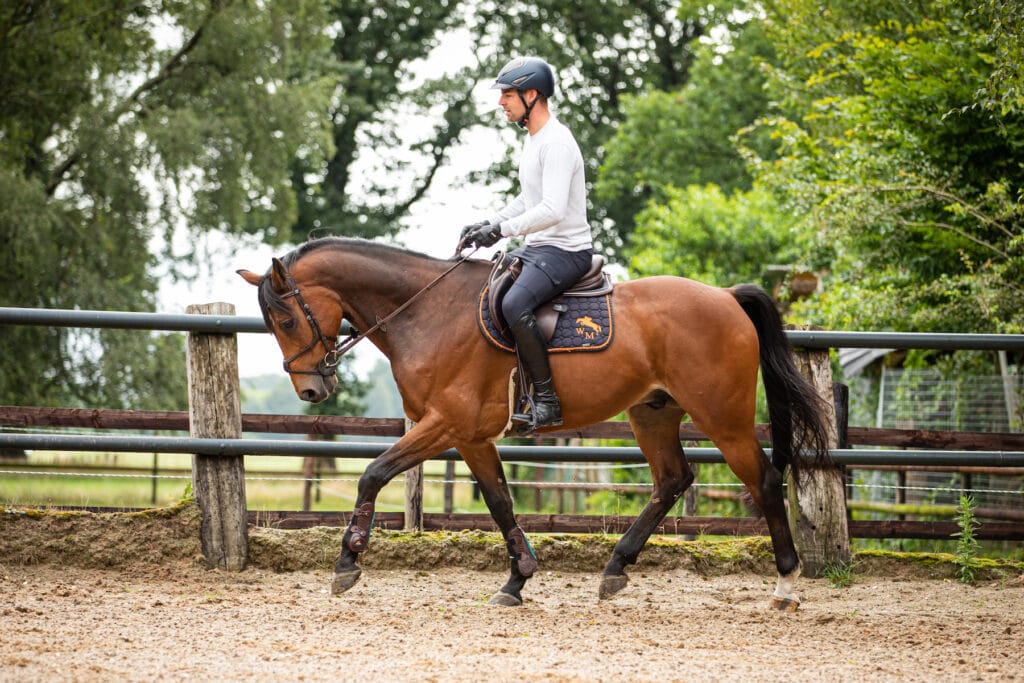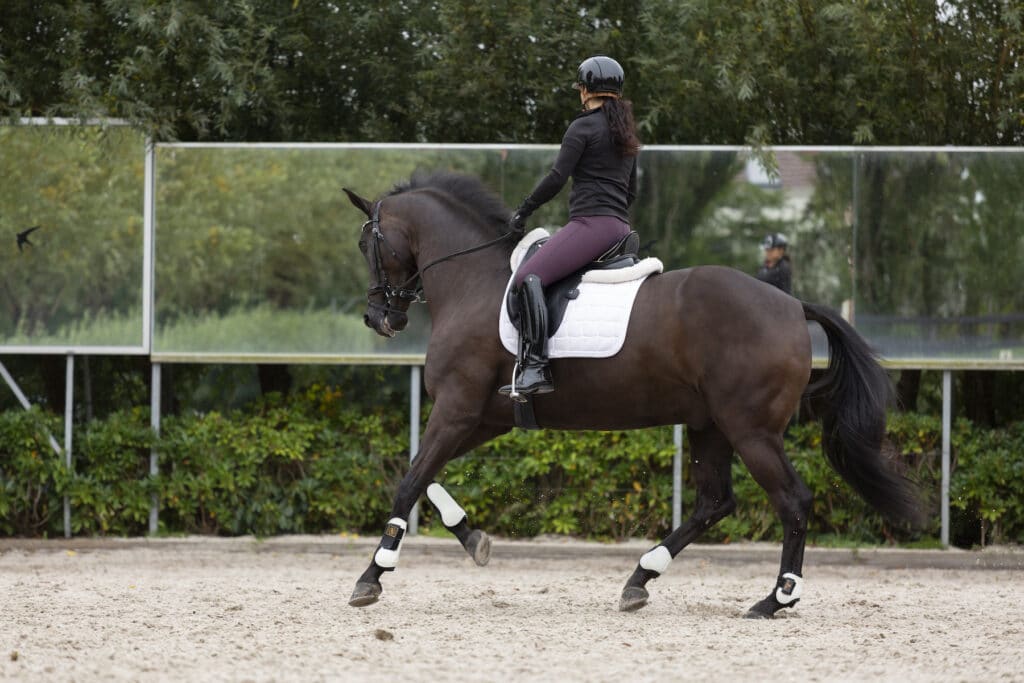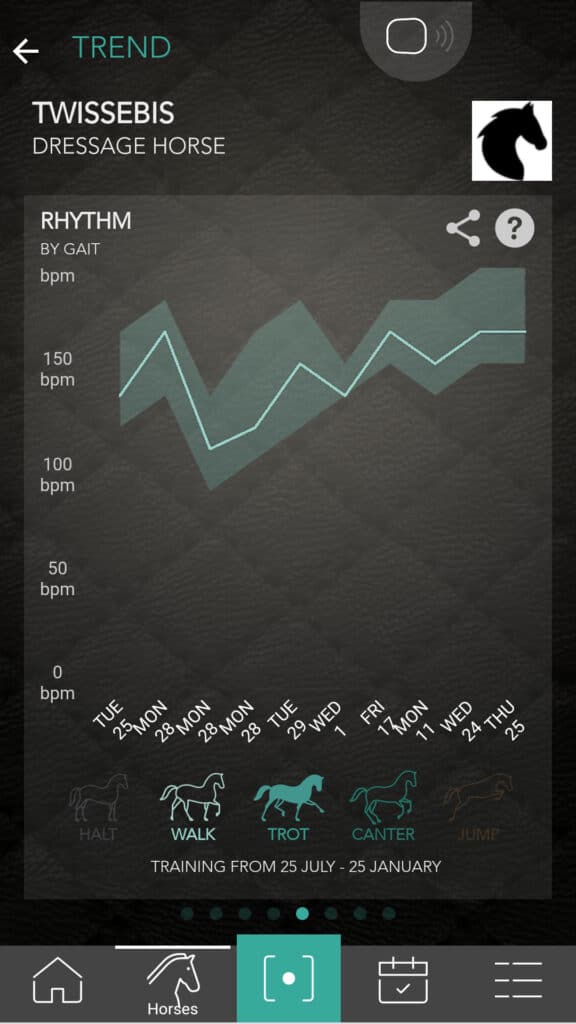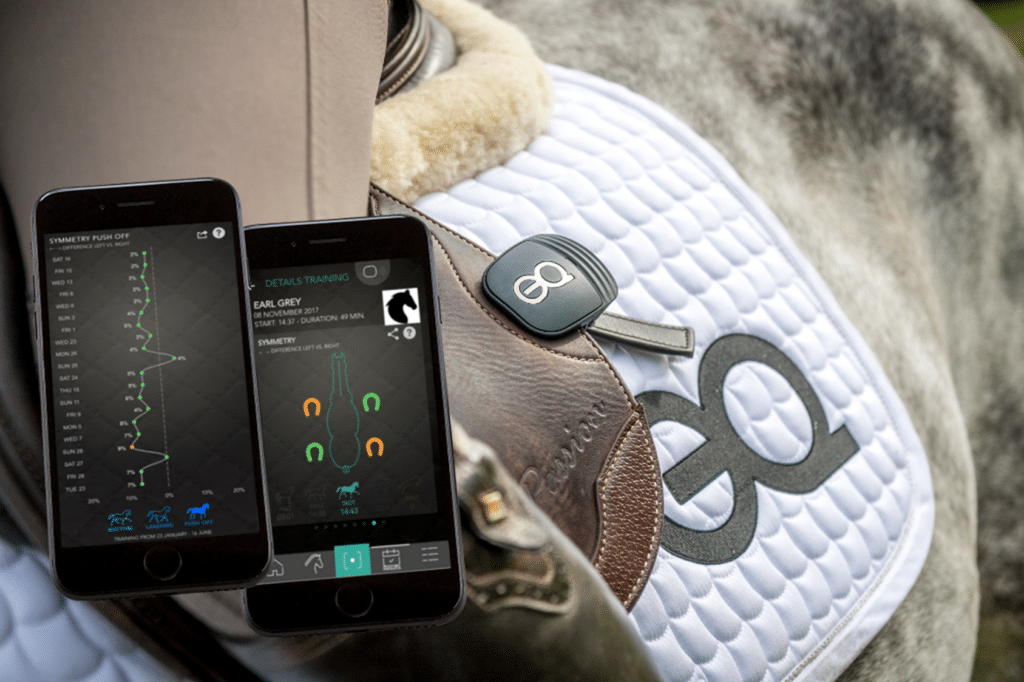Is your horse fit? Is he in good condition and are you completely sure that he’s straight, forward, and supple? Here are seven tips to get even more out of your training.
Tip 1: Monitor your training intensity
The best way to get your horse in better shape is to alternate the duration and intensity of your training simultaneously. It’s tempting to push your horse to his limit in the quest for better results. That’s not good for the horse, however. And it’s ineffective. A horse needs at least two days to completely recover from a hard training session, so keep that in mind when you’re putting together your training plan. Want your horse to be in the best shape possible? Then plan easy rides after strenuous work sessions. We bet it’ll do you both good! 🙂
Tip 2: Check whether you ride equally well on both reins
Do you use both reins equally in training? You probably ride more on the side that your horse prefers. Or maybe on the less-good side. Training for equal ability on either rein will improve symmetry. If you want to make sure that you’re training both sides equally, attach a training sensor to your saddle. The SaddleClip lets you see precisely how long you have ridden on each rein.
Tip 3: Checking your horse’s fitness – which gait do you train the most?
Riding is a sport based on feeling… and we hope that never changes. But, sometimes measurements can tell you a great deal. We try to find a good balance between all the gaits that we ride, but sometimes our feelings don’t tell us the total truth. It is important to know how long you’ve actually been riding in each gait. Your horse may find one gait easier, but then it’s all the more important to pay attention to the others that are of more difficulty. At your next training session, keep an eye on the amount of time you’re spending on each gait.
Tip 4: Take a close look at your horse’s rhythm
Are your horse’s strides equally long? Or does he take shorter and then longer steps? Analyzing your horse’s rhythm will give you insights on your horse’s balance and show whether he should learn to lengthen his stride. There are certain benchmarks you can use to compare your horse’s beats per minute (bpm) with average values. Find out how high (or low) your horse’s rhythm is and how evenly he moves. If you see significant deviations, ask yourself where the problem lies and how it can be solved. This will help make your horse fitter and healthier.
Tip 5: Learn your horse’s impulsion power
Impulsion is the power that your horse exerts when pushing off from the hindquarters. When your horse moves with energy, it pushes off firmly from the ground. And that’s what we want. Impulsion will vary, depending on gait, and should ideally be observed during each gait. Does your horse have a strong impulsion? If so, he will have a strong propulsion and a longer suspension. Less impulsion power will mean flatter movement. It’s interesting to monitor impulsion over longer periods of time. This way you can see if you’ve made progress. The use of an analysis tool is a simple way to monitor your horse’s impulsion. The SaddleClip lets you clearly see the level of impulsion your horse used in his last training session.
Tip 6: Check if your horse’s feet are touching down correctly
Each gait has its own rhythm, the timing in which your horse puts its feet on the ground. A walk has four beats, a trot has two and a canter has three. Your horse is well-trained when the distances between the individual strides are the same. It might happen that your horse loses rhythm during an exercise. If you notice this happening, adapt the exercise so that your horse can re-establish his rhythm.
The SaddleClip measures every change, even the tiniest ones, which also differ according to gait, and will show exactly where you need to do more work. This will help to prevent injuries before they start.
Tip 7: Manage your horse’s fitness by checking the symmetry
You train your horse’s balance as often as possible for strong, supple muscles. But how symmetrical is your horse, really? When your horse doesn’t like landing on the left diagonal, he will try to lessen the impact by trying to put less weight on that side or shifting weight to the other side. This can bring your horse out of balance, which is naturally undesirable. The same applies for pushing off. If your horse isn’t straight, he will have more push-off on one diagonal than on the other. It’s important to keep an eye on balance in both push-off and landing so that problems can be recognised early, and injuries prevented.
We humans may have keen senses, but we can’t always perceive a small imbalance, a slight loss of beat, or a broken rhythm. Want to determine your horse’s fitness as well as reduce the risk of injury? Then measure and analyse each movement with the SaddleClip.









